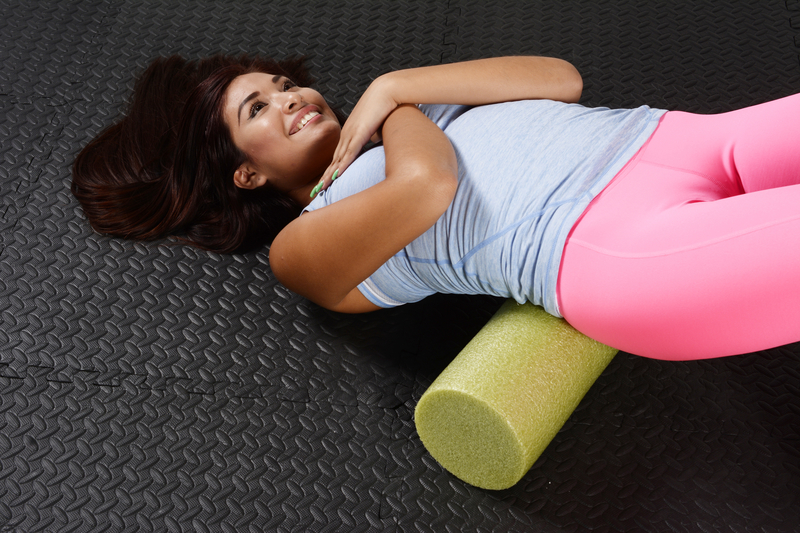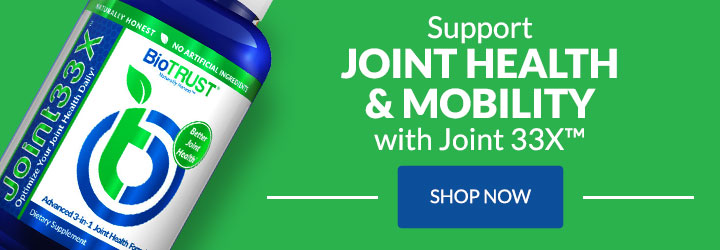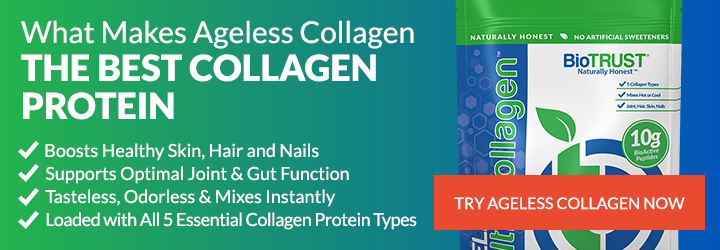See the Benefits of Foam Rolling + 5 Ways You MUST Try

You’ve probably heard that there are a wide range of benefits of foam rolling, but you may not know exactly what it is, why it’s good, or perhaps most importantly, how to use it to improve your physical state. While foam rollers are hardly new on the fitness scene, in the past, they were relegated to doctors’ offices and physical therapy locations. As the fitness scene has progressed, foam rollers can now be found at most gyms, in fitness classes, and in many homes.
What Is Foam Rolling?
Foam rolling may sound like innocent fun, but it turns out that it’s actually quite an effective form of self-treatment anyone can do at home to help alleviate pain and help prevent injuries.
Also known as “self-myofascial release” (SMFR), this technique helps to loosen tightened tissue, knots, and tension in your muscles. The friction action created by rolling back and forth, while inducing slight pressure over the affected area, helps to warm and release the tissues. This is especially helpful in priming the fascia (a fibrous tissue that wraps around muscles and organs and can become tightened) which becomes more fluid-like during such movements.
While the benefits of foam rolling are similar to sports massage, this is something you can easily do to work on your body yourself, on the cheap, and in the privacy of your own home.
Types of Foam Rollers
There are basically two types of foam rollers: smooth and bumpy. They are typically formed from a polystyrene substance which has the ability to retain its shape while at the same time providing “give.”
Smooth foam rollers—these are typically the tool of choice for physical therapists, sports massage studios, and at home stretching and yoga. These rollers come in low-density, medium-density, and firm-density foams, and each density will determine the amount of pressure applied to an area.
Bumpy foam rollers—these are a sturdier roller with built in bumps, knobs, or ridges which are designed to promote the ability to really get into the muscles and help to release trigger points. These foam rollers are not quite as forgiving as the smooth rollers and are not for the faint of heart. If you enjoy the pain of trigger point therapy, these are for you.

What Are the Benefits of Foam Rolling?
The benefits of foam rolling are vast, and there’s more than meets the eye. Here are a few of them:
- Prevent injury—foam rolling before a workout has been shown to help warm up muscles and promote circulation, which helps prevent strains and injury during your workouts.
- Improve flexibility—as you age, flexibility becomes more and more important, and foam rolling is a safe, easy, and effective way to increase your range of motion.
- Break up scar tissue—getting through the scar tissue is tough, but foam rolling helps to loosen tough tissues, and the pliability it causes can help disseminate scar tissue.
- Lessen muscle soreness—yes, rolling can help you with delayed onset muscle soreness (DOMS) after your intense workouts! Studies show that soreness was significantly reduced when using foam rolling after workouts.
- Promote blood flow—rolling can help you get the blood flowing again. And, better circulation through your veins, arteries, and capillaries means more oxygen delivery, better healing ability, and faster recovery time.
- Release myofascial tissue—imagine cellophane wrapped tightly around your muscles. This is what the fascia is like when it’s not released. Foam rolling can help to loosen this layer and massage your muscles and organs.
- Faster recovery—research shows that foam rolling can help you recover faster and more effectively after your workouts.
- Increase range of motion—studies show that range of motion improved significantly over time with continued and consistent use of foam rolling.
- Correct muscle imbalances—rolling can actually help to release tension and knots in muscles which could allow muscular imbalances to correct themselves naturally. When the muscle is able to let go, everything is able to move back into place.
- Relatively inexpensive, yet effective—foam rollers can be surprisingly low cost, especially if you opt for the smooth version. But, the huge benefits you derive from the foam roller make it worth its weight in gold!
What Not to Do
Now that you’ve brushed up on your foam roller anatomy, a few tricks of the trade may be in order. Let’s start with the “verboten” and go from there.
- Location, location, location—it’s important to hit the correct spots and focus slightly more on the areas that are bothering you. Contrary to popular belief, you don’t have to work all sections of your body equally. It’s okay and actually recommended that you linger longer on problem areas.
- Rolling time—at the same time, don’t put all your pressure on one spot for too long as it is possible to worsen the injury and create additional inflammation. Keep pressure on the affected area in short bursts and move along to other areas around the target area before returning to the targeted area.
- Slow it down—speed matters! Don’t roll too fast, take your time, and hit the right areas. Your muscles need time to relax, so make sure you give it to them.
- Don’t hold your breath—make sure to breathe fully and deeply as you roll.
- Watch your back—don’t spend excessive time on any one area of the vertebrae or put too much pressure on your lower back as there is not much tissue here between the bones and your skin.
Ready to Roll? Here Are 5 Foam Rolling Moves You Must Try!
Now that you know the benefits of foam rolling, having a routine should be an essential part of your exercise regimen. Typically, you’ll roll across a certain muscle area, and if there are any sore spots in particular, you can linger there for a few moments until the pain subsides or the area loosens.
- Foam rolling for back—there are several movements for the back (spine), lats (the sides of your back), and shoulder/upper back areas. Try this popular move for upper back: lie on your back with your knees bent, feet flat on the floor. Place the foam roller beneath your upper back/shoulder blade area and fold your arms behind your head. While keeping your abdominals tight, lift your hips off the ground, and use your legs to propel your body gently back and forth over the roller. If your upper back and shoulders are tight, this feels sooo good!
- Foam rolling for legs—there are several great movements for the glutes, hamstrings, legs, calves, shins, and inner and outer thighs. Try this move that’s very popular with runners for working on the iliotibial bands (IT bands): Lie down on your side. Begin on your right side with the right leg straight and your left leg bent over your right leg and your left foot on the floor in front of your right knee. The foam roller should be under your right hip with your torso slightly twisted toward the floor with your palms flat on the ground and arms straight. Slowly move your right leg (by pulling your torso forward and back) to massage the IT band area. If this feels too intense, use your left leg and your arms to lift your body slightly off the roller. Don’t forget to repeat on the other side.
- Foam rolling for thighs—begin lying face down with your arms outstretched in front of you and your thighs on the foam roller. Tighten your abdominals and bend upward at the hips to move forward and back over the roller to massage and loosen your thigh area. You can also rotate your legs in or out to work the inner and outer areas of your thighs, one side at a time.
- Foam rolling for chest—lie with your chest on the foam roller and your right arm out straight in front of you. Roll back and forth. You can also twist your body to hit different angles. When finished, repeat on the opposite side.
- Foam rolling for glutes and hips—sit on the foam roller and move so your right hip is on the roller. Cross your right leg over your left knee. Using your left leg for leverage (foot flat on the floor in front of you) and roll gently back and forth over the hip and glute area. You can also work on your calf muscles as well by continuing to roll further down your leg and focus on the areas from the back of your knee down to your Achilles tendon.
The Benefits of Foam Rolling: A Recap
As you can see, foam rolling is an easy and effective addition to any workout regimen. The next time you’re at the gym, instead of using that foam roller as a prop to balance your phone for selfies, why not branch out and try something new and enjoy how it feels to relax and release? The health benefits of foam rolling might just become your favorite part of your workout.







